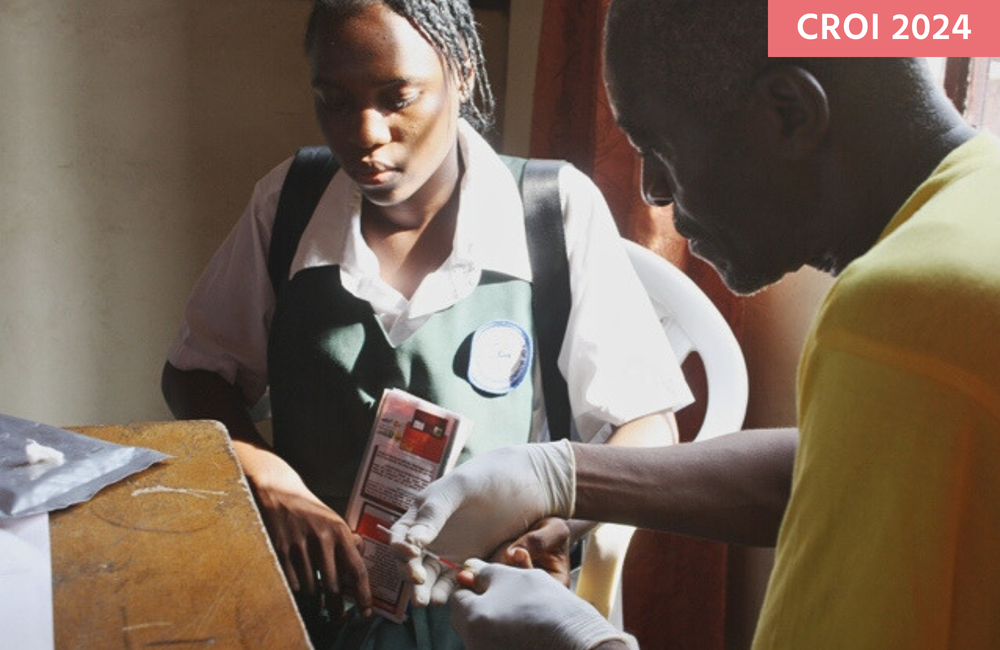
Almost two-thirds of new cases of HIV now occur outside countries with high HIV prevalence in southern and eastern Africa, according to an analysis of UNAIDS country-level data presented earlier this month at the Conference on Retroviruses and Opportunistic Infections (CROI 2024) in Denver.
Just over half (19.4 million, 53%) of the global population of people living with HIV resided in southern or eastern Africa in 2022, in 15 countries where national HIV prevalence is above 3.5%. But 62% of new HIV infections that year (770,000) were estimated to have occurred in countries with lower HIV prevalence (below 3.5%) in Africa, Asia, Latin America and eastern Europe and central Asia.
The analysis excluded countries where fewer than 40,000 people are estimated to be living with HIV, largely in the Middle East and north Africa, central America and the Caribbean, central Europe and central Asia.
The study finds that with the exceptions of Mozambique and Uganda, the HIV epidemic growth rate has fallen below 3.5% in southern and eastern Africa. But in some of the world’s most populous countries – Brazil, China, Mexico, Nigeria, Pakistan – the HIV epidemic grew by more than 5% per year.
Yet none of the countries with the highest rates of HIV epidemic growth have reached the UNAIDS target of 90% of diagnosed people with HIV on antiretroviral treatment. In Mexico, Nigeria and Pakistan, less than 70% of people with HIV are on treatment.
The majority of deaths due to HIV also occur in lower-prevalence countries. In 2022, an estimated 383,000 people died from AIDS in these countries, compared to 225,000 in higher-prevalence countries.
The analysis also highlights alarmingly high rates of vertical HIV transmission in lower-prevalence countries (16% vs 9% in higher-prevalence countries), although the absolute number of children who acquire HIV in higher-prevalence countries is likely to be greater owing to the proportion of people living with HIV in those countries who are women of childbearing age.
Many of the countries with the highest epidemic growth rates are middle-income nations with HIV epidemics that are concentrated in marginalised groups – predominantly gay and bisexual men, people who inject drugs and sex workers. Lack of political prioritisation, coupled with a lack of access to donor resources, means a lack of investment in HIV prevention and treatment.
The analysis highlights the lack of investment in PrEP and the scale of increase in PrEP coverage that is needed in lower-prevalence countries to reduce epidemic growth.
In 12 high-prevalence countries with available data on PrEP coverage, 1.3 million people started PrEP in 2022, compared to 1.17 million people in lower-prevalence countries.
Clinical trials and incidence surveys show that oral PrEP must be given to 60 people to prevent one new case of HIV, the study authors note. Based on this ratio, PrEP coverage would need to be expanded to 74 million people in order to achieve the UNAIDS target for HIV elimination by 2030 (a 90% decline in new cases of HIV between 2010 and 2030).
Pepperrell T et al. 62% of new HIV infections and 63% of deaths now reported in countries outside southern/east Africa. Conference on Retroviruses and Opportunistic Infections, Denver, abstract 1033, 2024.
View the abstract on the conference website.
Full image credit: A Liberian student being tested for HIV. Image by Bill Diggs. Available at www.flickr.com/photos/bed2/5578103964 under a Creative Commons licence CC BY-NC 2.0.
